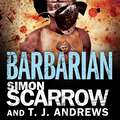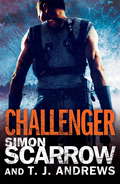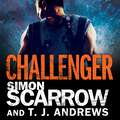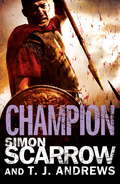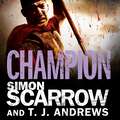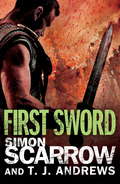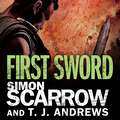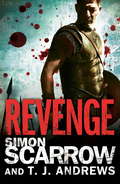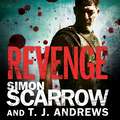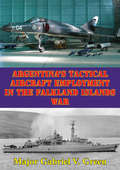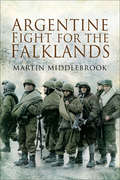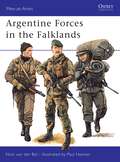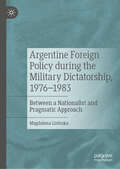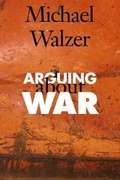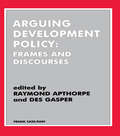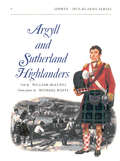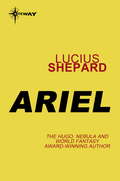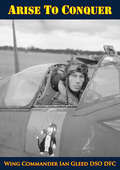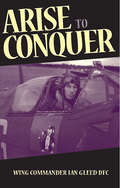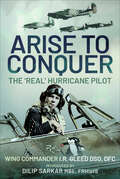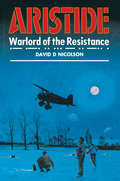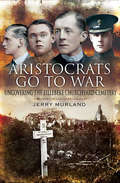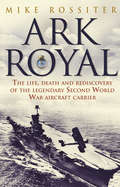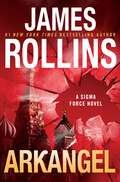- Table View
- List View
Arena: Barbarian (Roman Arena #1)
by Simon Scarrow T. J. AndrewsThe first in a series of action-packed novellas set in Ancient Rome introducing Pavo, a novice gladiator, and featuring Simon Scarrow's ongoing soldier character Optio Macro.It is AD 41. The savage Gaul Britomaris has defeated the best of the Roman gladiators in the arena. Now a young volunteer, Marcus Valerius Pavo, the son of a murdered general, has been given a month to prepare to face Britomaris in a fight which only one man can survive. He is to be trained by veteran soldier Macro, who fears for his young trainee's chances. But Pavo is motivated by more than a simple desire for victory or survival, and Britomaris may yet be facing his most dangerous opponent...(P)2018 Headline Publishing Group Ltd
Arena: Challenger (Part Two of the Roman Arena Series)
by Simon Scarrow T. J. AndrewsThe second novella in Simon Scarrow's Roman Arena series, following novice gladiator Pavo's next gruelling test, which will put mentor Macro's loyalties on the line.Rome under the rule of the ruthless new Emperor Claudius is a dangerous place. Condemned to gladiator school Marcus Valerius Pavo, the son of a treasonous general, is a celebrated hero following a dramatic victory in the arena. Now he finds himself pitted against one of the greatest gladiators who ever lived: Decimus Cominius Denter. Though Denter has fallen on harder times he is still a formidable opponent, and it is up to newly decorated Macro to whip him into shape. But as the much-heralded fight descends into chaos and riots threaten to engulf the city, Macro must choose between his duty to Rome and his loyalty to Pavo...
Arena: Challenger (Roman Arena #2)
by Simon Scarrow T. J. AndrewsThe second novella in Simon Scarrow's Roman Arena series, following novice gladiator Pavo's next gruelling test, which will put mentor Macro's loyalties on the line.Rome under the rule of the ruthless new Emperor Claudius is a dangerous place. Condemned to gladiator school Marcus Valerius Pavo, the son of a treasonous general, is a celebrated hero following a dramatic victory in the arena. Now he finds himself pitted against one of the greatest gladiators who ever lived: Decimus Cominius Denter. Though Denter has fallen on harder times he is still a formidable opponent, and it is up to newly decorated Macro to whip him into shape. But as the much-heralded fight descends into chaos and riots threaten to engulf the city, Macro must choose between his duty to Rome and his loyalty to Pavo...(P)2018 Headline Publishing Group Ltd
Arena: Champion (Part Five of the Roman Arena Series)
by Simon Scarrow T. J. AndrewsThe fifth and final instalment in Simon Scarrow's electrifying ARENA series sees gladiator Pavo face his most gruelling battle yet as strives to avenge his father's death.From the moment his father was executed in the arena for an act of treason, former military tribune and condemned gladiator Marcus Valerius Pavo has burned with the desire for revenge. Now all that stands between Pavo and victory is a man considered by many to be the greatest gladiator to have ever lived: Hermes. But even with Optio Macro as his trainer, and the help of the snakish imperial secretary, defeating Hermes appears an impossible task. With a conspiracy unfolding within the walls of the palace and a storm gathering over Rome, Pavo will have to call on everything he has learned under Macro if he is to his triumph over his father's killer - and become the champion of the arena...
Arena: Champion (Roman Arena #5)
by Simon Scarrow T. J. AndrewsThe fifth and final instalment in Simon Scarrow's electrifying ARENA series sees gladiator Pavo face his most gruelling battle yet as strives to avenge his father's death.From the moment his father was executed in the arena for an act of treason, former military tribune and condemned gladiator Marcus Valerius Pavo has burned with the desire for revenge. Now all that stands between Pavo and victory is a man considered by many to be the greatest gladiator to have ever lived: Hermes. But even with Optio Macro as his trainer, and the help of the snakish imperial secretary, defeating Hermes appears an impossible task. With a conspiracy unfolding within the walls of the palace and a storm gathering over Rome, Pavo will have to call on everything he has learned under Macro if he is to his triumph over his father's killer - and become the champion of the arena...(P)2018 Headline Publishing Group Ltd
Arena: First Sword (Part Three of the Roman Arena Series)
by Simon Scarrow T. J. AndrewsThe third novella in Simon Scarrow's Roman Arena series sees gladiator Pavo and mentor Macro fight for their lives amid a bloody revolt.The imperial gladiator school in Capua: once the pride of the Roman Empire, lately driven to the brink of ruin by a greedy lanista. Now the school welcomes its newest recruit: Marcus Valerius Pavo, the high-born gladiator with a string of impressive victories to his name, sworn to seek revenge for the brutal murder of his father. Meanwhile Lucius Cornelius Macro, the decorated optio of the Second Legion, has been appointed as the school's new lanista. Macro faces a race against time to turn the school around before the start of the games in Rome, held in honour of the new Emperor. But when a notorious tribal warrior sets in motion a violent uprising, Macro and Pavo find themselves caught in a desperate struggle for survival...
Arena: First Sword (Roman Arena #1)
by Simon Scarrow T. J. AndrewsThe third novella in Simon Scarrow's Roman Arena series sees gladiator Pavo and mentor Macro fight for their lives amid a bloody revolt.The imperial gladiator school in Capua: once the pride of the Roman Empire, lately driven to the brink of ruin by a greedy lanista. Now the school welcomes its newest recruit: Marcus Valerius Pavo, the high-born gladiator with a string of impressive victories to his name, sworn to seek revenge for the brutal murder of his father. Meanwhile Lucius Cornelius Macro, the decorated optio of the Second Legion, has been appointed as the school's new lanista. Macro faces a race against time to turn the school around before the start of the games in Rome, held in honour of the new Emperor. But when a notorious tribal warrior sets in motion a violent uprising, Macro and Pavo find themselves caught in a desperate struggle for survival...(P)2018 Headline Publishing Group Ltd
Arena: Revenge (Part Four of the Roman Arena Series)
by Simon Scarrow T. J. AndrewsThe opening day of the Games in Rome is a time for celebration in honour of the new Emperor. But for Marcus Valerius Pavo, a young military tribune fallen from grace, only despair awaits. Along with former mentor, Optio Macro, Pavo must fight for his life in a ferocious beast hunt. Battling against lions and bears, he'll have to use all his wits to survive, as well as the help of a hated former rival. But when Pavo achieves a stunning victory, his reward is to be condemned to death in a chaotic free-for-all. Now the young gladiator faces a race against time to triumph over the odds, save his son - and exact the ultimate revenge over the Emperor...
Arena: Revenge (Roman Arena #4)
by Simon Scarrow T. J. AndrewsThe opening day of the Games in Rome is a time for celebration in honour of the new Emperor. But for Marcus Valerius Pavo, a young military tribune fallen from grace, only despair awaits. Along with former mentor, Optio Macro, Pavo must fight for his life in a ferocious beast hunt. Battling against lions and bears, he'll have to use all his wits to survive, as well as the help of a hated former rival. But when Pavo achieves a stunning victory, his reward is to be condemned to death in a chaotic free-for-all. Now the young gladiator faces a race against time to triumph over the odds, save his son - and exact the ultimate revenge over the Emperor...(P)2018 Headline Publishing Group Ltd
Argentina's Tactical Aircraft Employment In The Falkland Islands War
by Major Gabriel V. GreenThe aerial forces of the Argentinean Air Force and Navy found themselves in a complex, unenviable position during the 1982 conflict with Great Britain for possession of the Falkland Islands/Islas Malvinas. Despite Argentinean numerical superiority, the modern weaponry and tactical proficiency of the United Kingdom's armed forces were a formidable threat. The Argentineans found themselves in a disadvantaged tactical situation due to a lack of preparation to include planning, intelligence, training, and resources necessary to counter a sophisticated military threat. To lessen their disadvantage, the Argentineans reorganized their Air Force; leveraged the tactical skill, innovation, and determination of their pilots; and employed their newly acquired air-launched Exocet anti-ship missile. This paper examines the context of the Argentinean political situation, explores the condition and reaction of the Air Force and Naval Air Arm to imminent conflict, details the aerial combat employment outcomes, and concludes with an evaluation of the results.Worldwide headlines declared either invasion or liberation on 2 April 1982. These words explained how both London and Buenos Aires felt after the Argentineans seized the Falkland Islands from the United Kingdom. Because of this action, the aerial forces of the Argentinean Air Force and Navy found themselves in a complex, unenviable position during the conflict with Great Britain for possession of the Falkland Islands. The Argentineans were in a disadvantaged tactical situation due to a lack of preparation to include planning, intelligence, training, and resources necessary to counter a sophisticated military threat. To lessen their disadvantage, the Argentineans reorganized their Air Force; leveraged the tactical skill, innovation, and determination of their pilots; and employed their newly acquired air-launched Exocet anti-ship missile.
Argentine Fight for the Falklands (Pen And Sword Military Classics Ser. #No. 21)
by Martin MiddlebrookAn account by the only British historian to have been granted open access to the Argentines who planned and fought the Falklands War. Avoiding involvement in the issue of sovereignty and concentrating entirely upon the military story, this history is a unique and balanced look at the 1982 war for the islands that the UK called the Falklands and Argentina called the Malvinas, a ten-week conflict that killed nearly a thousand people. Among the men the author met were the captain of the ship that took the scrap-metal merchants to South Georgia; the admiral in charge of planning the Falklands invasion; the marine commander and other members of the invasion force; two brigadier-generals, five unit commanders, and many other men of the large army force sent to occupy and defend the islands; the officer in charge of the Argentine garrison at Goose Green; and, finally, the brigadier-general responsible for the defense of Port Stanley and soldiers of all ranks who fought the final battles.
Argentine Forces in the Falklands
by Paul Hannon Nick BijlThe announcement of the imminent withdrawal of the British Royal Navy's ice patrol ship HMS Endurance in early 1982 prompted the Argentinian Junta in Buenos Aires to plan a military grab of the Falklands -- a siege they assumed would succeed with little resistance. Such an adventure was attractive as a distraction for the Argentine public at a time of political unease. In April, the Junta, led by Gen. Leopoldo Galtieri, made its move. This fascinating book examines the history, organization and equipment of the Argentine forces that battled for control of this remote British outpost during the Falklands War (1982).
Argentine Foreign Policy during the Military Dictatorship, 1976–1983: Between a Nationalist and Pragmatic Approach
by Magdalena LisińskaThis book examines Argentine foreign policy under the military dictatorship from 1976–1983, also known as the National Reorganization Process. It brings together case studies on the most distinctive decisions and key issues in the regime’s foreign relations, including the international response to human rights violations, the dispute with Chile over the Beagle Channel, covert operations in Central America, the Argentine nuclear program, and the Falklands War. Lisińska examines the influence of ideological factors on foreign policy decisions, highlighting the relationship between the nationalism shaping the military’s policy goals and its pragmatic approach to achieving them.
Arguing About War
by Michael WalzerMichael Walzer is one of the world's most eminent philosophers on the subject of war and ethics. Now, for the first time since his classic Just and Unjust Wars was published almost three decades ago, this volume brings together his most provocative arguments about contemporary military conflicts and the ethical issues they raise. The essays in the book are divided into three sections. The first deals with issues such as humanitarian intervention, emergency ethics, and terrorism. The second consists of Walzer's responses to particular wars, including the first Gulf War, Kosovo, Afghanistan, and Iraq. And the third presents an essay in which Walzer imagines a future in which war might play a less significant part in our lives. In his introduction, Walzer reveals how his thinking has changed over time. Written during a period of intense debate over the proper use of armed force, this book gets to the heart of difficult problems and argues persuasively for a moral perspective on war.
Arguing Development Policy: Frames and Discourses
by Des Gasper Raymond ApthorpeThis collection shows how policy discourses in the fields of national and international developments are constructed and operate and how they can be analysed. Dominant discourses screen out certain aspects: they frame' issues to include some matters and typically exclude important others. More generally, different policy discourses construct the world in distinctive ways, through language that requires deconstruction and careful review.
Argyll and Sutherland Highlanders
by Michael Roffe William McelweeOn 1 July 1881 Viscount Cardwell's wholesale reorganisation of the British Army brought into existence Priness Louise's Argyll and Sutherland Highlanders. Both had existed as separate regiments even before their official incorporation into the British Army and on the face of it, this seemed a highly improbable union, Being separated both geographically and historically - they had never even served together in the same theatre. Yet, as history has shown, this unlikely combination proved to be a tremendous success. William McElwee tells the story of this most famous of regiments which has served with distinction in World War I (1914-1918), World War II (1939-1945), and beyond.
Arido Americano (1 #1)
by R. David SimpsonCinco personas en cinco áreas de Canadá y Estados Unidos se ven envueltas en una guerra por las necesidades estadounidenses de agua. Esta es la historia de una guerra ecológica internacional, entrelazada con la política de poder, el amor y la muerte. El agua, el recurso más valioso de la humanidad, une a Canadá y Estados Unidos en la guerra. Desde la Casa Blanca, la oficina del gobernador de Sacramento, Flint Michigan, En el Parlamento canadiense, Ottawa, Vancouver y Atlin BC, los combatientes enfrentan las consecuencias de sus actos y fechorías al enfrentarse entre sí por el derecho a tomar o proteger el agua.
Ariel
by Lucius ShepardAriel brilliantly transmutes some traditional SF concepts - alien incursions, the mysteries of quantum physics - into an astonishing, often moving reflection on love and obsession, memory and identity, and the archetypal conflict that stands at the heart of an infinite multitude of worlds.
Arise To Conquer [Illustrated Edition]
by Wing Commander Ian Gleed DSO DFCIncludes the Aerial Warfare In Europe During World War II illustrations pack with over 200 maps, plans, and photos.When historians ultimately write of the Battle of Britain they must turn for firsthand accounts to the men who fought off the Nazi air onslaught upon the heart of the British Empire. If the pitifully small number of British fighter squadrons had faltered, the outcome of the entire war might have been decided for the tragic worse in 1941. Who were the pilots who carried this burden? What manner of young men were they? What were their day-by-day and hour-by-hour duties and motives and feelings?Wing-Commander Ian Gleed, a young man in his early twenties, was one of the tiny band of flyers upon whom the responsibility for turning back the airborne invasion fell. His story is only incidentally one of heroism; it is far more a simple narrative of duty assumed and done with youthful enthusiasm and unconscious idealism.
Arise to Conquer
by Ian GleedA Royal Air Force fighter pilot&’s action-packed memoir of his service before, during, and after the epic World War II battle. Originally published during the war in 1942, this is the other side of the mirror from the philosophical flight record of authors such as Antoine de Saint Exupery. It is a literal, daily record of an English fighter pilot of 23 years fighting in the Battle of Britain, giving a truly authentic picture of life on a squadron in those times. Gleed details his first sortie in 1939, his breakdown not so long after, his return to the RAF and battles over France, his exploits in the Battle of Britain, becoming an ace, downing Messerschmitts, and eventually being awarded the DFC for his service as leader and fighter.Praise for Arise to Conquer&“An epic of the Battle of Britain.&” —The Sphere (UK)&“An excellent account of the daily life of a fighter squadron in the Battle of Britain… gives spirited descriptions of many air combats.&” —Flight
Arise to Conquer: The 'Real' Hurricane Pilot
by I.R. GleedBorn in 1916, after learning to fly as a civilian, Ian Richard Gleed was granted a RAF commission in 1936. He completed training on Christmas Day that year, being posted to 46 Squadron which was equipped with the Gloster Gauntlet. Through much of his RAF service the diminutive Gleed was known as ‘Widge’, short for ‘Wizard Midget’ on account of his excessive use of the word ‘wizard’ to describe something ‘topper’, and his short stature. Rising from Flight to Squadron Commander in short order, and later taking over the Ibsley Spitfire Wing in 1941, Gleed was enormously popular with his peers. Indeed, Wing Commander ‘Bunny’ Currant once described Gleed as a ‘pocket-sized man with care for others and courage beyond compare’. Having been decorated with the coveted ‘double’ of both DSO and DFC, Wing Commander Gleed went out to lead a wing in Tunisia. It was there that he was shot down and killed on 16 April 1943. By this time, he had achieved the status of being a fighter Ace, having been credited with the destruction of thirteen enemy aircraft. The previous year, Gleed’s wartime memoir, Arise to Conquer, was published by Victor Gollancz. Eloquently written and detailed, this book is a superb first-hand account of one man’s life and times as a fighter pilot – mainly flying the Hawker Hurricane – during the Fall of France, the Battle of Britain and beyond into the night Blitz. Reprinted here in its entirety, and extensively introduced by the renowned aviation historian Dilip Sarkar MBE, FRHistS, this edition of Arise to Conquer is supported by a remarkable set of wartime images. Among Gleed’s Hurricane pilots on 87 Squadron during the Battle of Britain and beyond was Sergeant Laurence ‘Rubber’ Thorogood, a keen photographer who is often mentioned in this book. Along with his Commanding Officer’s words, Rubber’s unique personal photograph album, containing as it does a number of images of Gleed, provides a rare glimpse of a fighter squadron at war during our Darkest – yet Finest – Hour.
Aristide: Warlord of the Resistance
by David NicolsonThis is the story of Roger Landes - "Aristide" of F Section, Special Operations Executive - who was born in Paris of British parents and came to London in 1938, to work in the LCC's Architects Department. After being trained as a wireless operator in the Royal Signals, he was recruited into SOE, where he trained with figures such as Claude de Baissac and Harry Pueleve. Although jinxed in his attempts to parachute into France, including being "shot down" by an owl, he eventually became wireless operator in Bordeaux for the "Scientist" circuit. Just as he took over command of the circuit, he was betrayed and forced to flee, and later returned to find only one contact alive and in place. By D-Day he commanded over 5000 armed, trained resisters who disrupted transport in the region by destroying 438 locomotives and numerous power-lines. By the Liberation, he commanded more than 7000 men and had organized the peaceful transition to French government in South-West France. Ordered out of the country by de Gaulle, Landes had a spell in hospital before being parachuted into Malaya to train the population to resist the Japanese, and was there at the surrender in August 1945. Following de Gaulle's resignation he was highly decorated by the French Government, and in 1992 was made an Officer of the Legion d'Honneur. He also holds the MC and Bar, and the Croix de Guerre.
Aristocrats Go to War: Uncovering the Zillebeke Cemetery
by Jerry MurlandZillebekes small churchyard military cemetery provides the inspiration for this charming piece of military and social history. The author has researched into the exploits and backgrounds of 27 fallen soldiers, the majority being officers of the Guards and Cavalry, as well as other ranks and six Canadians.The outcome is a fascinating and moving book that emphasizes the indiscriminate nature of war. Privilege and wealth were no protection against bullets and shells and all men regardless of background took their chances, standing shoulder to shoulder. The 1st Battle of Ypres in late 1914 was in many ways the last stand of Britains Contemptible Little Army (as the Kaiser called it) and the Ypres Salient was to remain the focus of so much fighting over the next four years.Thanks to detailed research and support from the families concerned, the author has unearthed letters, memorabilia and photographs.
Ark Royal: Sailing Into Glory
by Mike RossiterIn June 1941 the Ark Royal won one of Britain's most famous naval victories. The German destroyer, Bismarck, had been ravaging the British fleet in the Atlantic. Sailing through a ferocious storm the Ark Royal tracked the Bismarck. A dozen swordfish bombers took off from her deck and pounded shell after shell into the German battleship, sending her to the ocean floor. It was a signal victory that resonated around the world. Hitler, furious at the loss of the German fleet's flagship, demanded that the Ark Royal be destroyed at whatever cost.HMS Ark Royal is one of the Royal Navy's most iconic ships. When she was launched in 1938 she was one of the most sophisticated weapons at the disposal of British military command. The aircraft carrier was the latest, and soon to be one of the most feared, developments in naval warfare. In her first two years of operation the Ark Royal survived countless attacks, and was considered one of the luckiest ships in the Navy.But her air of invincibility was to prove wishful thinking. Within one month of sinking the Bismarck, the Ark Royal too was destroyed while sailing off the coast of Gibraltar. And there she has rested, one kilometre below the surface of the Mediterranean, until her wreck was discovered by Mike Rossiter in 2004.In gripping detail, and using the testimony of survivors of the sinking and men who lived, flew and fought on the Ark Royal, Mike Rossiter tells the remarkable story of the life and legend of this most iconic of ships. Also, and for the first time, he reveals the story of the quest to discover the wreck of this naval legend.
Arkangel: A Sigma Force Novel (Sigma Force #18)
by James RollinsCurrently in development as a TV series from Amazon MGM Studios, a story of a thrilling hunt around the globe, pitting nation against nation, as ancient myths of a lost continent prove all too real—the latest novel in the bestselling Sigma Force series from James Rollins, #1 New York Times master of international thrillers The execution of a Vatican archivist within the shadow of the Kremlin exposes a conspiracy going back three centuries—to the bloody era of the Russian Tsars. Before his murder, he manages to dispatch a coded message, a warning of a terrifying threat, one tied to a secret buried within the Golden Library of Tsars, a vast and treasured archive that had vanished into history.As combative forces race for the truth behind this death and alarming discovery, Sigma Force is summoned to aid in the search—not only for this missing trove of ancient books, but to follow a trail far into the Arctic, to search for the truth about a lost continent and a revelation that could ignite a global war. But Sigma Force has its own difficulties at home after an explosive attack on the National Mall—one aimed at the heart of their covert agency—has left them vulnerable and exposed.The growing conflict—both on Russian soil and deep in the Arctic—will reignite a centuries-old war between the newly resurgent Russian Orthodox Church and the Vatican, while sabers rattle across the nations of the Arctic Circle, threatening to turn those icy seas into a fiery conflagration.Facing enemies on all sides, it will be up to Commander Gray Pierce and Sigma Force to unravel a mystery going back millennia—and uncover the truth about a lost civilization and an arcane treasure that could save the planet…or destroy it.
